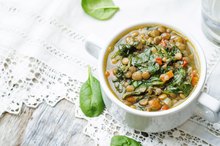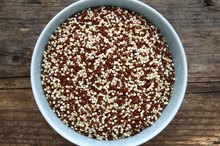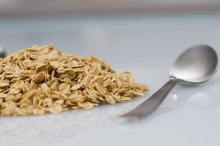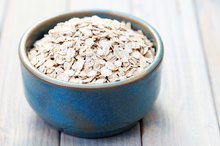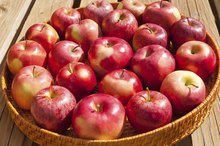What does fact checked mean?
At Healthfully, we strive to deliver objective content that is accurate and up-to-date. Our team periodically reviews articles in order to ensure content quality. The sources cited below consist of evidence from peer-reviewed journals, prominent medical organizations, academic associations, and government data.
- MayoClinic.com: Dietary Fiber - Essential for a Healthy Diet
- MayoClinic.com: Slideshow - Guide to a High-Fiber Diet
- MayoClinic.com: Breakfast - Why Is It So Important to Weight Control?
The information contained on this site is for informational purposes only, and should not be used as a substitute for the advice of a professional health care provider. Please check with the appropriate physician regarding health questions and concerns. Although we strive to deliver accurate and up-to-date information, no guarantee to that effect is made.
Fiber One Cereal and Weight Loss
Fiber One cereal isn’t defined as a diet or weight-loss food, but its nutritional profile makes it well suited to act as one. The cereal is low in calories, makes for a healthy breakfast option and can help people curb their hunger and total calorie consumption to achieve better weight-loss results.
Benefits
The original variety of Fiber One cereal satisfies more than 50 percent of an average adult’s daily requirement for dietary fiber, which can act as a natural weight-loss aid. According to MayoClinic.com, fiber-rich foods take longer to digest and chew, so they may trigger fullness signals sooner and help the body remain full for longer 2. High-fiber foods also help reduce cholesterol and blood sugar levels and keep the digestive system running smoothly.
Explanation
Can Fiber One Cereal Be Part of a Low-Carb Diet?
Learn More
Fiber One’s power to help people lose weight may also have to do with its primary role as a breakfast food. MayoClinic.com states that people who skip breakfast are at a greater risk for obesity, but people who eat the meal regularly tend to make healthier eating choices, be more physically active and weigh less. Because people eat Fiber One in the morning, it can help activate metabolism right away and reduce cravings and hunger as the day progresses.
Nutrition
A half-cup serving of the original Fiber One cereal has 60 calories, 105 mg sodium, no sugar and a negligible amount of fat, making it a much lighter option than most other breakfast cereals on the market. One serving has 25 g carbohydrates, about 14 g fiber and 2 g protein. When served with milk, the total meal’s nutritional content changes.
Uses
What is Muesli Good for?
Learn More
The most intuitive way to incorporate Fiber One into a healthy eating plan is to just have it for breakfast with milk. You can also add fresh fruit, such as a handful of berries, to the bowl of cereal. However, there are plenty of other ways to use Fiber One and boost your daily fiber intake even more. One option is to grind or process the cereal into powder, which you can add to batters for baked goods or pancakes. Fiber One also adds crunch as a green salad topping or fruit salad garnish, and it adds extra nutrients and minimal calories to granola and yogurt parfaits.
- The most intuitive way to incorporate Fiber One into a healthy eating plan is to just have it for breakfast with milk.
- One option is to grind or process the cereal into powder, which you can add to batters for baked goods or pancakes.
Considerations
Before adopting any new dietary regimen, speak with your physician.
Related Articles
References
- MayoClinic.com: Dietary Fiber - Essential for a Healthy Diet
- MayoClinic.com: Slideshow - Guide to a High-Fiber Diet
- MayoClinic.com: Breakfast - Why Is It So Important to Weight Control?
- Williams PG. The benefits of breakfast cereal consumption: a systematic review of the evidence base. Adv Nutr. 2014;5(5):636S-673S. doi: 10.3945/an.114.006247
Writer Bio
Carly Schuna is a Wisconsin-based professional writer, editor and copy editor/proofreader. She has worked with hundreds of pieces of fiction, nonfiction, children's literature, feature stories and corporate content. Her expertise on food, cooking, nutrition and fitness information comes from a Level 1 personal training certification and years of in-depth study.


